25 Flavorful Thai Desserts To Sweeten Your Day
Thai desserts captivate food lovers with their mesmerizing blend of sweet, creamy, and exotic flavors that dance across your palate.
Culinary traditions in thailand weave intricate stories through these delectable treats, transforming simple ingredients into extraordinary culinary experiences.
Tropical fruits, coconut milk, and fragrant herbs characterize these remarkable confections that reflect the country's rich gastronomic heritage.
Unique textures ranging from silky smooth to delightfully chewy make these desserts stand out in the global culinary landscape.
Vibrant colors and artistic presentations showcase the meticulous craftsmanship behind each carefully constructed sweet creation.
Sophisticated yet approachable, these desserts represent a perfect harmony of complex flavors and cultural traditions.
Regional variations add depth and intrigue to these irresistible delicacies that tantalize taste buds.
Get ready to savor these 25 delicious thai desserts that promise an unforgettable culinary journey:
Delicious Thai Desserts for a Sweet Escape
Thai sweets bring together coconut, tropical fruit, and sticky rice in creative ways. Each dessert offers a light, refreshing end to a spicy meal or hot day.
Khanom Khrok
Khanom khrok are miniature Thai coconut pancakes with a unique two-layered texture crafted from rice flour and coconut milk.
Street vendors expertly prepare these bite-sized treats in special cast-iron pans with rounded indentations.
Small round portions feature a crispy exterior and creamy interior filled with subtle sweet and savory ingredients.
Scallions, taro, corn, and pumpkin frequently enhance the delicate coconut custard filling.
Traditional preparation involves carefully cooking each layer to achieve perfect golden-brown edges and smooth center.
Thai street food culture celebrates these compact snacks as quick, satisfying bites.
Balanced flavors and intricate cooking technique make khanom khrok a beloved Southeast Asian delicacy.
Crisp yet tender textures distinguish these irresistible mini pancakes from other regional desserts.
Khao Niao Mamuang
Khao niew mamuang is Thailand's most beloved sweet dessert combining steamed glutinous rice drenched in rich coconut milk and served alongside ripe mango slices.
Street vendors and restaurants across Thailand serve this simple yet irresistible treat that balances creamy texture with tropical fruit sweetness.
Travelers and locals alike crave its smooth rice base coated in silky coconut cream.
Glutinous rice gets carefully steamed to create its signature sticky consistency.
Coconut milk provides a luxurious, sweet coating that complements the rice's texture.
Perfectly ripe yellow mango adds fresh fruity contrast to the creamy dessert.
Seasonal mangoes determine the dish's ultimate flavor profile.
Ingredients remain minimal but create an unforgettable tropical dessert experience.
Pa Thong Ko
Pa thong ko represents a crispy Thai street food classic adapted from Chinese youtiao, featuring deep-fried flour dough strips with a golden, puffy exterior.
Street vendors and home cooks create these crullers by mixing flour, yeast, baking ammonia, alum powder, water, salt, and sugar into a stretchy dough.
Careful preparation involves oiling the dough, allowing it to rest, and cutting it into long strips that are carefully paired and pressed together.
Skilled makers traditionally shape the dough into classic elongated forms, though modern variations now include playful designs like dinosaurs and dragons.
Hot oil transforms the dough strips into light, airy pastries with a satisfying crunch.
Street markets and breakfast tables across Thailand frequently feature these addictive snacks.
Travelers and locals enjoy pa thong ko plain or dipped in sweetened condensed milk or accompanying morning coffee.
Ruam Mit
Ruam mit are colorful Thai dessert bowls loaded with an eclectic mix of sweet ingredients swimming in coconut milk.
Street vendors across Thailand craft these refreshing treats by combining multiple starchy components like tapioca pearls, corn, lotus root, sweet potatoes, beans, and jackfruit.
Each serving offers a unique blend of textures and flavors, with no standard recipe guiding its creation.
Vendors customize their ruam mit with creative ingredient combinations and decorative noodle shapes.
Shaved ice often crowns these cool summer refreshments, making them perfect for beating Thailand's intense heat.
Affordable and widely available, a typical bowl costs around 15 baht.
Ruam mit represents Thailand's playful street food culture, where creativity and spontaneity shine.
Locals enjoy these sweet, multicolored desserts as quick, satisfying treats that showcase culinary creativity.
Grass Jelly (Chao Kuai)
Chao kuai is a cooling Southeast Asian dessert crafted from Mesona chinesis mint family plant leaves and stalks, creating a dark herbal jelly traditionally served over crushed ice with brown sugar.
Regional variations showcase its versatility, with locals enjoying it pure or enhanced with condensed milk, fresh fruits like jackfruit and mango, or complementary ingredients such as sago and watermelon.
Widespread across Thailand, China, Hong Kong, Macau, and Taiwan, this refreshing treat offers a unique herbal flavor profile that transforms simple ingredients into a delightful summer dessert.
Street vendors and home cooks prepare the dark, smooth jelly by carefully cooking and processing plant materials into a distinctive gelatinous substance.
Each serving provides a cool, slightly bitter taste balanced by sweet accompaniments that highlight its natural herbal essence.
Steamed Coconut-Pandan Cake (Khanom Chan)
Khanom chan represents a multilayered Thai steamed dessert crafted from complex starch mixtures blending rice, tapioca, and arrowroot flours with creamy coconut milk and subtle sweetness.
Rice flour batter transforms into elegant two-toned layers alternating between pure white and soft green sections through careful steaming techniques.
Jasmine and pandan extracts provide distinctive flavor profiles creating visual and taste complexity.
Green layers gain rich color and nutty undertones from pandan leaf essence.
Traditional preparation involves precisely creating nine distinct layers showcasing meticulous culinary craftsmanship.
Coconut milk ensures smooth, silky texture throughout each delicate section.
Steaming process requires patience and skill to achieve perfect consistency.
Small individual servings highlight intricate layering techniques fundamental to Thai dessert artistry.
Khanom Fak Bua
Kue cucur are Indonesian sweet fritters characterized by their distinctive thick middle and crispy edges, crafted from palm sugar, rice flour, and coconut milk.
Malaysian and Thai cultures also embrace this traditional snack, with Thai versions symbolizing marital love and often served at weddings.
Betawi culture from Jakarta presents the most celebrated Indonesian interpretation of these treats.
Skillfully deep-fried until golden brown, kue cucur boasts a unique texture that balances crispness and softness.
Thailand connects these fritters to lotus symbolism, representing romantic connections between newlyweds.
Indonesian versions typically feature a flattened shape with thicker central portions.
Serving temperatures range from hot to room temperature, ensuring maximum enjoyment.
These fritters taste best when consumed immediately to maintain their ideal texture and prevent becoming sticky or stiff.
Lot Chong Nam Kathi
Lot chong nam kathi are sweet Thai noodle droplets steeped in coconut milk that symbolize eternal love through their unique preparation method.
Pandan-flavored rice flour noodles are carefully pushed through small holes to create delicate green droplets with a distinctive texture.
These traditional noodles originated as a wedding ceremony dessert in Thailand, representing the couple's hopes for a long-lasting relationship.
Palm sugar enhances the sweetness of the coconut milk base, creating a rich and aromatic liquid.
Fragrant pandan leaves give the noodles their signature green color and subtle herbal flavor.
Wedding guests would enjoy this dessert as a blessing for the newlyweds' future.
Each spoonful combines the softness of rice flour droplets with the creamy coconut milk.
Generations of Thai families have cherished this unique dessert as a symbol of love and connection.
Khao Lam
Khao lam are traditional Southeast Asian bamboo-steamed rice cylinders bursting with sweet, creamy flavors originating from Thailand, Myanmar, Cambodia, and Laos.
Rice varieties like white or red blend seamlessly with grated coconut, sugar, and coconut milk inside carefully prepared bamboo tubes.
Skilled artisans seal ingredients within slender bamboo sticks before roasting them slowly over hot coals.
Ancient cooking techniques transform simple ingredients into a rich, custard-like dessert with complex textures and subtle sweetness.
Sugar enhances the rice's natural flavors while coconut milk creates a smooth, creamy consistency.
Each bamboo tube contains a unique mixture reflecting regional culinary traditions.
Fresh ingredients determine the final taste profile of this rustic treat.
Generations have perfected this delicate balance of ingredients and cooking methods, making khao lam a beloved street food across Southeast Asia.
Thai Crispy Rolls (Thong Muan)
Thong muan are golden crispy wafer rolls originating from Thailand that transform simple ingredients into a delightful street snack.
Rice flour, coconut milk, sugar, eggs, and sesame seeds create its signature batter that gets spread thinly on hot pans.
Skilled makers cook the mixture until perfectly golden and immediately roll it into a cigar-like tube while still warm and flexible.
Street vendors and local shops often sell these light, crunchy treats alongside tea or coffee.
Regional variations might include slight adjustments to the base recipe.
Sesame seeds contribute an extra layer of nutty flavor and texture.
Golden Threads (Foi Thong)
Foi thong are delicate golden egg yolk threads suspended in sweet syrup, originating from Portuguese-influenced Thai dessert traditions.
Portuguese traders introduced this intricate cooking technique to Thailand during the 16th century culinary exchanges.
Skilled cooks carefully drizzle duck egg yolks through a narrow funnel into boiling sugar syrup, creating thin, elegant strands.
Pandan leaves often infuse the syrup with a subtle, fragrant flavor, enhancing the dessert's complexity.
Thai restaurants and street vendors frequently serve foi thong as a popular sweet treat during celebrations and special occasions.
Rich duck egg yolks provide a luxurious golden color and smooth texture to the dessert.
Sugar syrup gives the threads their glossy, sweet coating and distinctive shine.
Careful technique and precise temperature control determine the success of this delicate confection.
Kluai Thot
Kluai thot are crispy deep-fried Thai bananas with a golden exterior and soft sweet center, perfectly transforming humble burro bananas into an irresistible street food snack.
Street vendors across Thailand prepare these treats by coating peeled banana slices in a light rice flour batter mixed with sesame seeds, coconut shreds, and subtle spices.
Each banana gets completely submerged in hot oil until achieving a crunchy golden-brown shell that crackles with the first bite.
Traditional recipes use specific local banana varieties like kluay nam wa for maximum flavor and texture.
Small amounts of sugar and salt enhance the natural banana sweetness.
Baking powder or slaked lime helps create an extra crispy coating.
Regional variations might include different flour ratios or additional spice blends.
Served warm in paper bags, kluai thot offer a quick, affordable indulgence beloved by locals and travelers.
Mamuang Nam Pla Wan
Mamuang nam pla wan represents a signature Thai street food snack combining unripe green mangos with an irresistible sweet-savory dipping sauce.
Sweet-tangy fish sauce anchors nam pla wan's complex flavor profile, blending palm sugar, shallots, and dried shrimp.
Fresh green mangos provide crisp, tart contrast to the rich sauce's depth.
Small chili peppers add subtle heat to the condiment's intricate balance.
Shrimp paste contributes umami undertones that elevate the overall taste experience.
Regional Thai vendors frequently prepare this simple yet sophisticated snack as a quick street food treat.
Ingredients are carefully selected to maximize flavor complexity.
Traditional preparation methods ensure each bite delivers maximum sensory enjoyment.
Khanom Tokyo
Tokyo pancakes are compact Thai street food crepes crafted from leavened egg batter, offering versatile sweet and savory fillings like creamy spreads, custards, sausages, and ground pork.
Street vendors expertly prepare these small rolled pancakes with precision and speed.
Thephiset, a special variation, features a larger crepe stuffed with crumbled sausage, beaten eggs, Maggi seasoning sauce, and powdered white pepper.
Each pancake serves as a portable meal that balances crispy edges with soft interior textures.
Vendors typically cook these treats on flat griddles, creating a golden-brown exterior that enhances the rich ingredients inside.
Thai street cuisine embraces these pancakes as a quick, satisfying snack that reflects the country's dynamic food culture.
Tourists and locals alike enjoy these handheld delicacies for their convenience and complex flavor profiles.
Ingredients and cooking techniques vary slightly across different regions of Thailand, making each bite a unique culinary experience.
Pulut Durian
Pulut durian stands out as a creamy Malaysian sweet treat combining glutinous rice with rich, pungent durian fruit.
Malaysians treasure this dessert for its intense flavor and unique texture that blends soft rice with custard-like durian.
Rice gets steamed with coconut milk and salt, creating a smooth base for the distinctive fruit.
Pandan leaves often add subtle fragrance to the dish.
Singapore and Thailand also enjoy variations of this classic dessert.
Street vendors and home cooks prepare pulut durian during festive seasons and family gatherings.
Coconut milk ensures a silky consistency that complements durian's strong taste.
Sweet and savory elements merge in this traditional Southeast Asian delicacy that reflects regional culinary traditions.
Khanom Tom
Khanom tom are sweet Thai rice flour dumplings celebrated for their delicate texture and rich coconut-based filling.
Originating in central Thailand, these bite-sized treats combine soft, chewy exteriors with a luscious center of melted palm sugar and shredded coconut.
Artisan makers often enhance the dough's flavor by adding pandan leaves or butterfly pea extract for natural coloring and aroma.
Traditional preparation involves carefully wrapping the sweet coconut mixture inside rice flour dough before boiling and rolling the dumplings in fresh shredded coconut.
Skilled cooks sometimes infuse the filling with subtle flower fragrances using scented candles.
Regional variations include different natural colorings and filling consistencies.
Serving temperature ranges from warm to room temperature, making them versatile dessert options.
Each dumpling represents a perfect balance of texture, sweetness, and traditional Thai culinary craftsmanship.
Sticky Rice With Custard (Khao Niao Sangkhaya)
Khao niao sangkhaya blends sweet coconut custard with sticky rice, creating Thailand's most beloved street dessert.
Thai vendors craft this treat by layering glutinous rice with rich, creamy coconut custard made from eggs, coconut cream, and palm sugar.
Street markets and home kitchens across Thailand showcase this simple yet elegant dessert.
Vendors typically serve the dessert warm, allowing the custard to gently seep into the rice.
Palm sugar adds a deep caramel-like sweetness that distinguishes this treat from other rice desserts.
Regional variations might include additional toppings or slight ingredient adjustments.
Foreign travelers often discover this dessert as a memorable introduction to Thai sweet cuisine.
Thong Yip
Thong yip are golden-hued Thai desserts symbolizing prosperity through intricate egg yolk sweets crafted from duck and chicken egg yolks blended with sugar and jasmine water.
Sweet golden cups symbolize wealth and success in Thai culture, traditionally prepared for weddings and special celebrations.
Artisans carefully shape these delicate treats into flower or five-point star designs using precise techniques.
Each small porcelain cup holds a meticulously formed dessert that represents cultural significance beyond its sugary taste.
Jasmine water adds subtle fragrance to the rich egg yolk mixture.
Careful preparation involves delicate shaping and chilling processes.
Sugar transforms egg yolks into glossy, elegant confections.
Generations of Thai families have cherished these symbolic sweets as meaningful culinary gifts.
Khanom Tan
Khanom tan are traditional Thai steamed palm fruit cakes bursting with sweet tropical flavors and delicate textures.
Rice flour and fresh palm fruit create a soft, golden dessert that melts in you mouth.
Coconut milk adds rich creaminess to the unique treat.
Banana leaf containers provide natural, fragrant packaging for each individual cake.
Thai street vendors and home kitchens often prepare these small sweets during warm seasons.
Palm fruit brings natural sweetness and distinctive yellow color to the dessert.
Sugar enhances the natural fruit flavors and helps bind ingredients.
Generations of families have enjoyed this simple yet elegant Southeast Asian delicacy.
Thai Pumpkin Custard (Sangkhaya Fak Thong)
Sangkhaya fak thong embodies Thailand's sweet culinary artistry through a unique dessert where creamy coconut custard nestles inside a whole roasted pumpkin.
Thai cooks carefully hollow out fresh pumpkins, removing seeds and inner flesh to create a natural baking vessel.
Whisked duck or hen eggs blend smoothly with coconut milk, sugar, and fragrant pandan leaves.
Cornstarch stabilizes the silky custard mixture before it fills the pumpkin's hollow center.
Gentle steaming transforms the ingredients into a harmonious dessert with tender pumpkin walls and smooth, rich custard.
Traditional preparation requires precise temperature control and careful ingredient selection.
Served in elegant slices, this dessert offers a balanced combination of sweet, creamy textures.
Coconut milk and pandan provide distinctive Southeast Asian flavor profiles that distinguish sangkhaya fak thong from other global desserts.
Dara Thong
Dara thong reveals royal Thai dessert elegance through intricate golden star-shaped pastries crafted with delicate egg yolks, flour, and fragrant jasmine water.
Skilled artisans carefully mold these sweet treats into crown-like designs that showcase meticulous culinary craftsmanship.
Roasted watermelon seeds provide a subtle crunch across the dessert's surface, enhancing its textural complexity.
Delicate gold leaf decorates the top, signaling luxury and special occasion significance.
Traditional preparation demands precise techniques passed through generations of Thai sweet makers.
Jasmine water infuses subtle floral notes into each carefully constructed bite.
Sugar coating adds balanced sweetness to the pastry's nuanced flavor profile.
Royal Thai courts originally developed this sophisticated dessert as a symbol of refined gastronomic artistry.
Khao Mak
Khao mak are traditional Thai fermented rice desserts with low alcohol content, crafted through a complex process of transforming sticky rice into a sweet, slightly boozy treat.
Sticky rice receives careful soaking and cooking before mixing with a special starter called look pang, which contains yeast and aromatic herbs and spices.
Fermentation gives khao mak its unique flavor profile and gentle alcoholic essence.
Rice grains slowly break down during fermentation, creating a soft, sweet mixture with mild alcoholic notes.
Microorganisms in the starter help develop complex flavors during the process.
Rice variety and fermentation duration significantly impact khao mak's final taste and texture.
Each batch carries subtle differences based on individual preparation methods and ingredient quality.
Kraya Sat
Kraya sat is a sticky, sweet Buddhist ceremonial dessert combining sugar cane, sesame, coconut, peanuts, and glutinous rice into a compact treat resembling a traditional granola bar.
Buddhist monks often receive this offering during religious ceremonies as a symbolic gesture of respect and gratitude.
Its unique texture comes from carefully blending sticky ingredients into a dense, chewy confection.
Monks appreciate the dessert's simple yet nourishing composition.
Banana leaves typically wrap the treat, protecting its shape and adding a subtle earthy aroma.
Southeast Asian communities especially value this dessert for its cultural significance.
Preparation requires careful mixing and precise ingredient proportions.
Sugar cane provides the primary sweetening element in this traditional Buddhist delicacy.
Thong Muan Sot
Thong muan sot are delicate Thai rolled pancakes originating from Kanchanaburi province with a silky smooth texture unlike their crispy traditional cousin.
Rice flour, coconut milk, sugar, and eggs form the creamy base of this sweet treat transformed through careful pan cooking.
Skilled cooks spread the thin batter across specialized pans, creating soft, delicate sheets that roll into elegant cylinders.
Diners enjoy these pancakes as a light dessert with subtle sweetness and complex layers.
Thailand's street vendors and home kitchens craft these treats using traditional techniques passed through generations.
Coconut milk provides rich undertones that complement the subtle rice flour base.
Each pancake demonstrates precision in creating paper-thin, tender rolls.
Kanchanaburi's culinary heritage shines through this simple yet elegant dessert.
Khanom Farang Kutti Chin
Khanom farang kutti chin stands as a unique Bangkok pastry blending Portuguese and Chinese culinary traditions with its distinctive muffin-like texture.
Portuguese missionaries first introduced this sweet treat to Thailand during cultural exchanges in early trading periods.
Generations of Kudi Chin community bakers have carefully preserved the original recipe using simple ingredients like duck eggs, wheat flour, and sugar.
Thai families traditionally prepare this cake during special gatherings and celebrations.
Soft and slightly dense, the cake offers a mild sweetness that distinguishes it from other regional desserts.
Kudi Chin residents continue making this pastry using generations-old techniques passed through their community.
Women often bake these cakes in small ceramic molds that create uniform round shapes.
Small bakeries in Bangkok's historic districts still sell this nostalgic cake as a reminder of multicultural culinary heritage.
What Are the Most Commonly Used Natural Sweeteners in Thai Desserts?
Thai desserts traditionally rely on a variety of natural sweeteners that add depth and balance to their vibrant flavors:
Which Fruits Are Most Often Featured in Thai Desserts?
Thai desserts showcase a bounty of tropical fruits, celebrated for their vibrant flavors and refreshing qualities:
These fruits create the harmonious, exotic flavors that make Thai desserts so beloved worldwide.

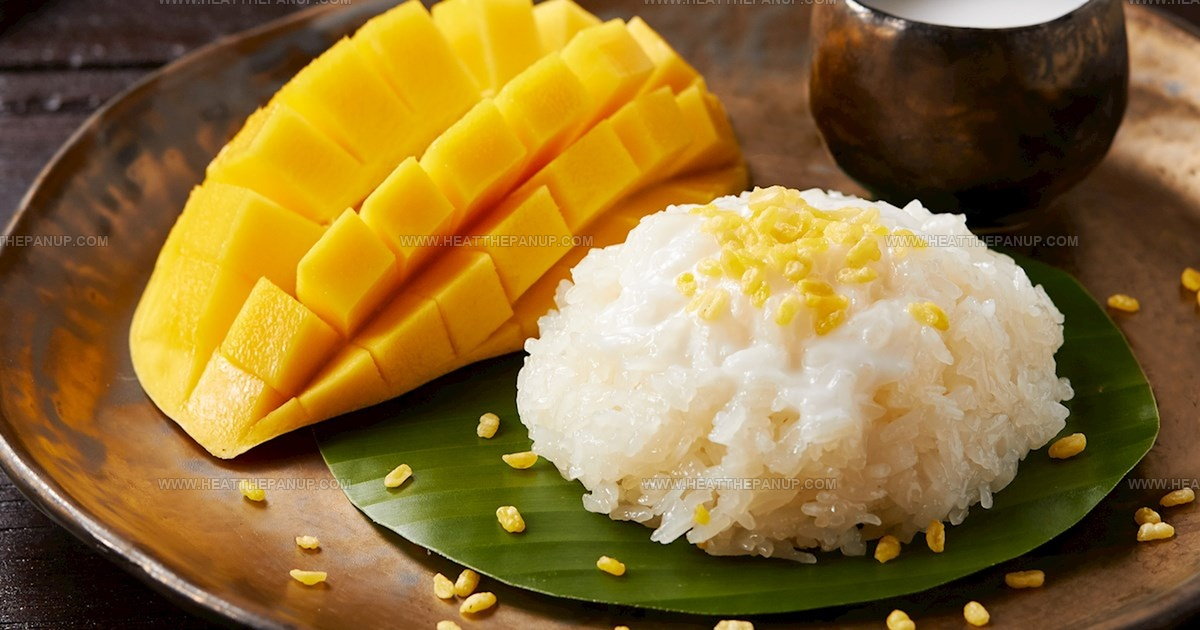
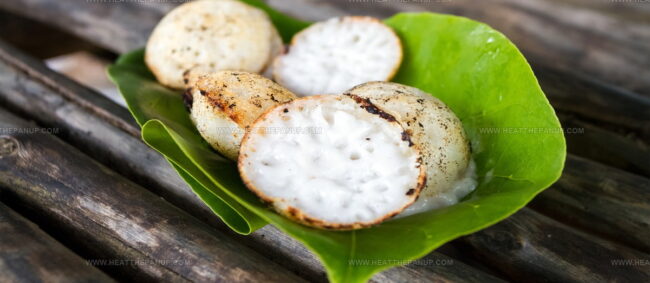
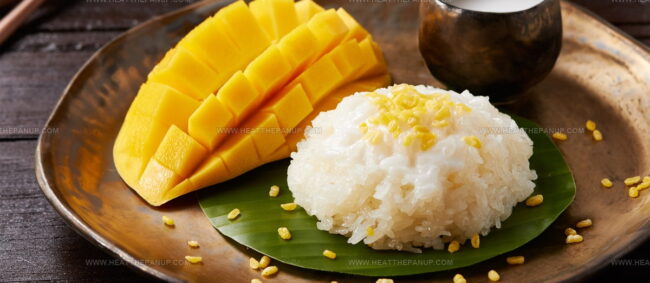
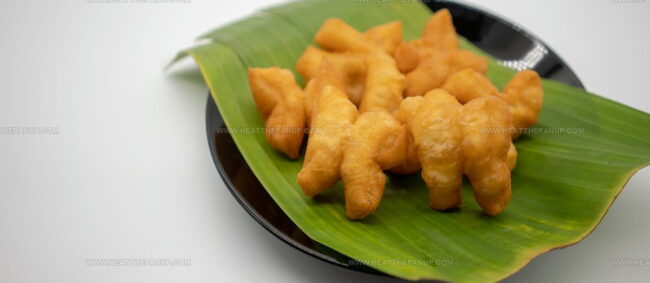
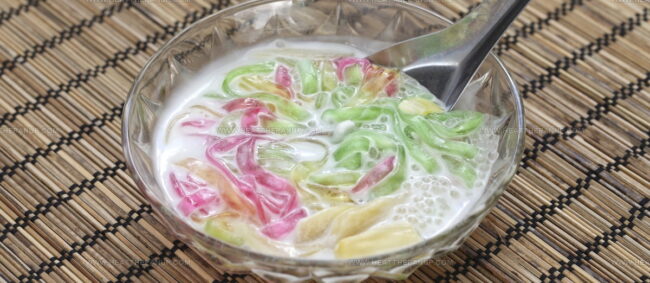
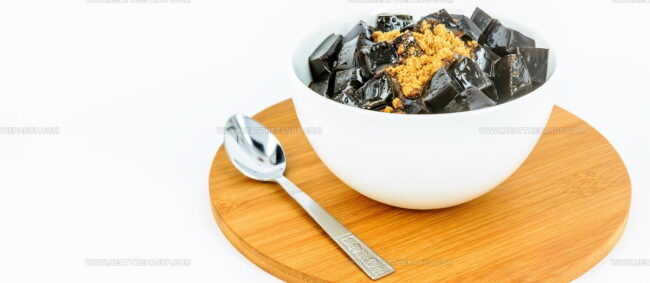
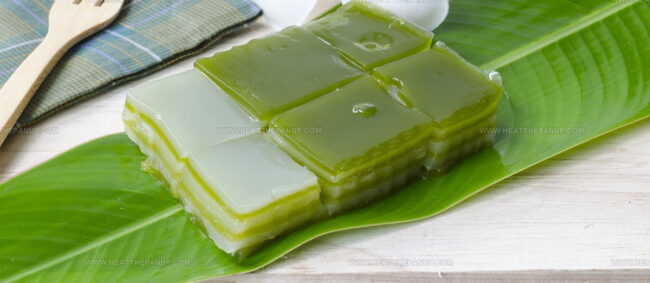
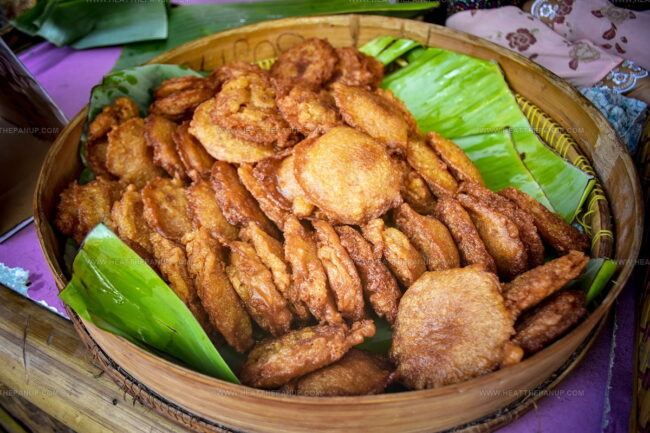
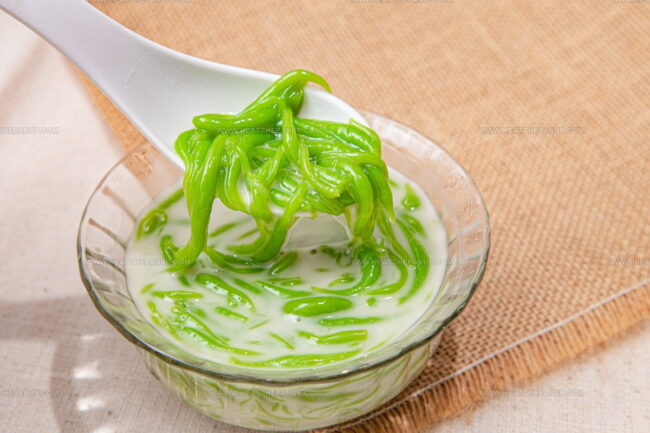
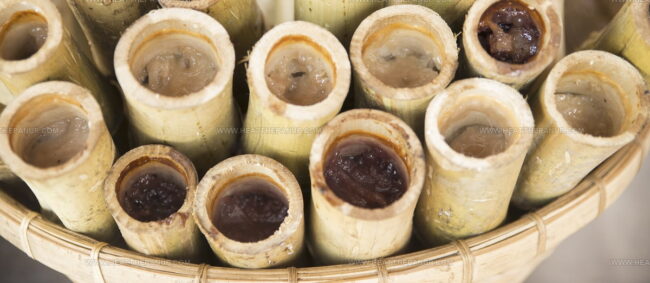
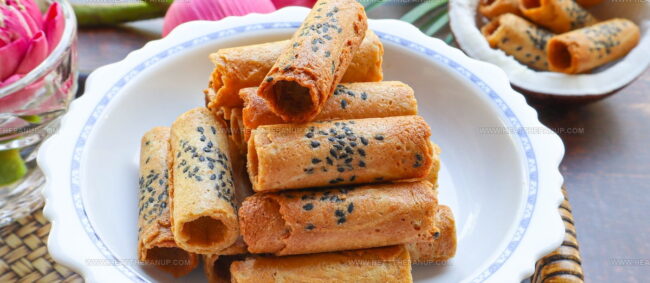
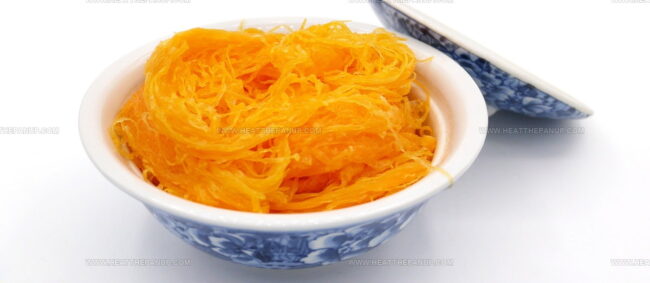
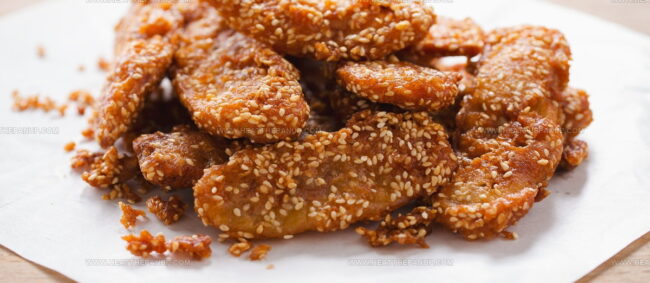
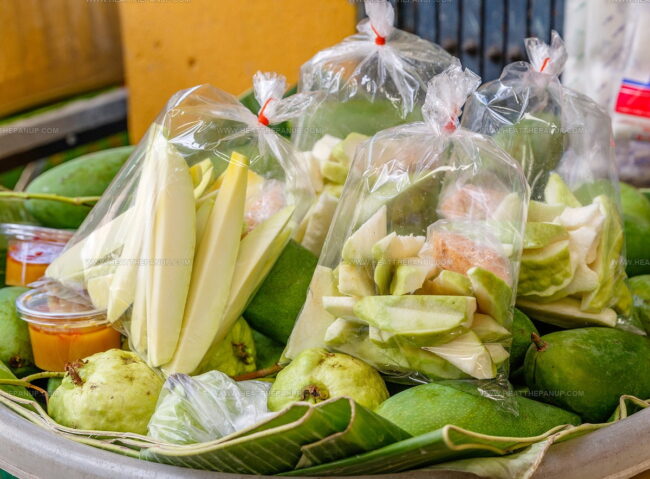
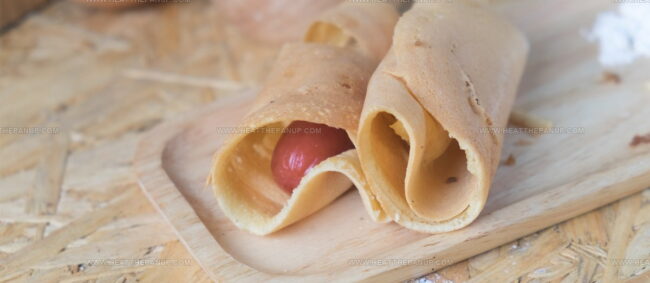
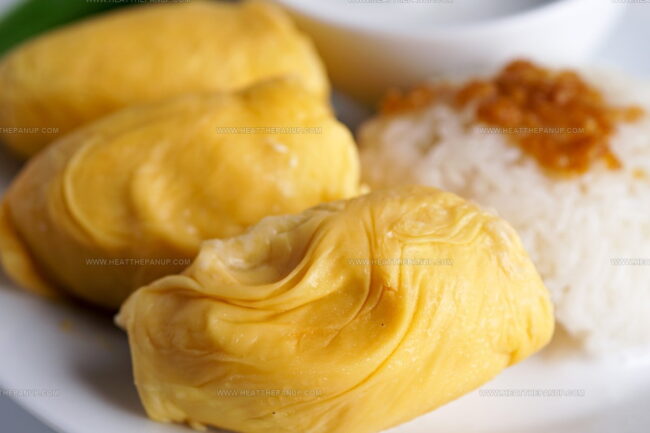
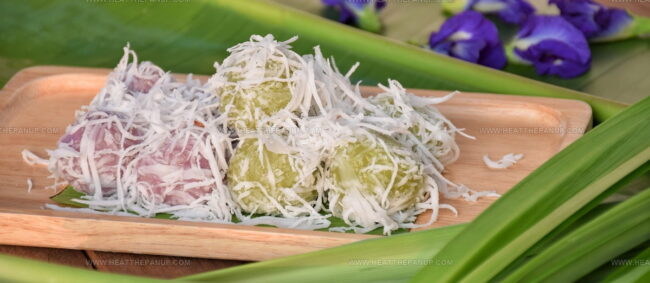
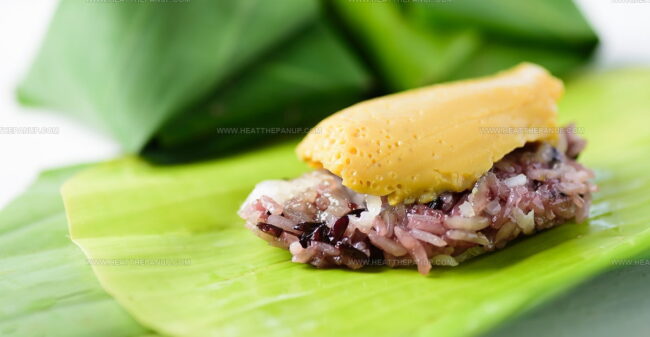
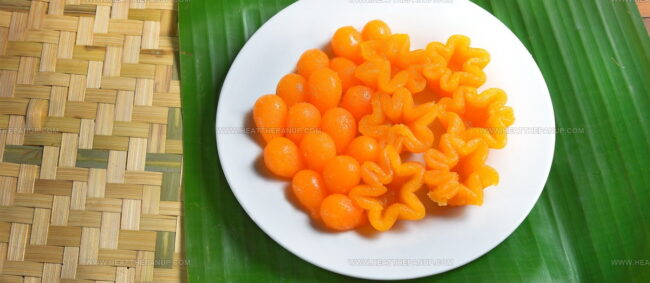
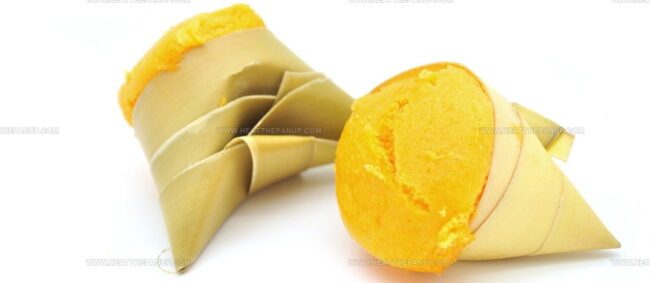
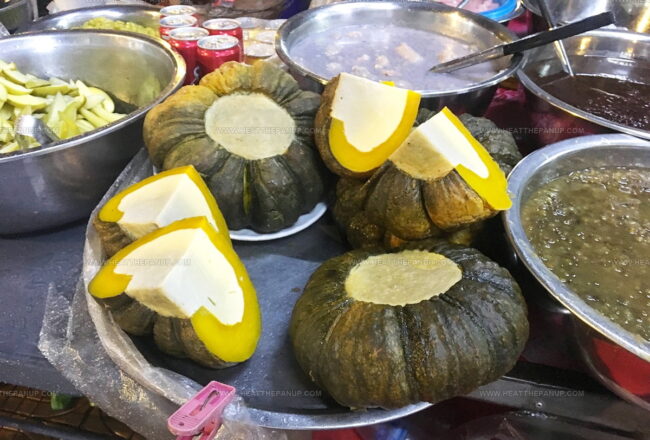
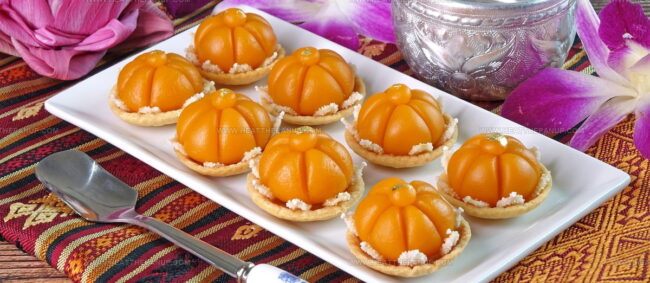
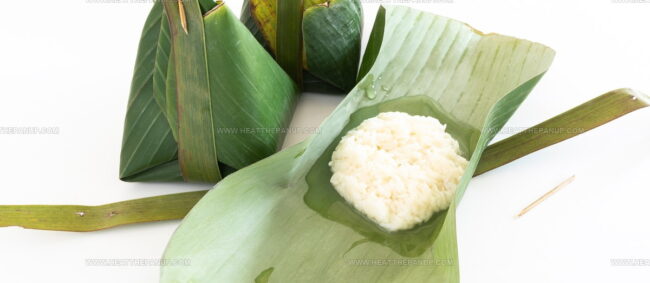
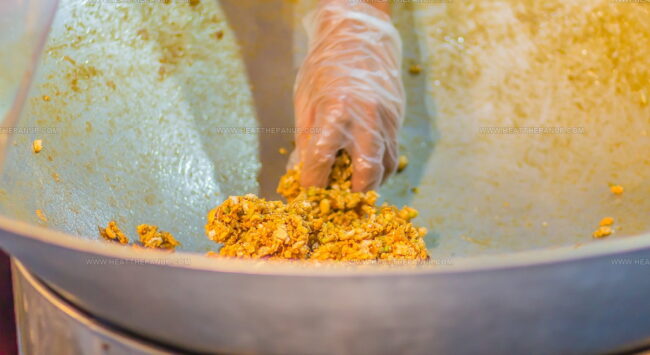
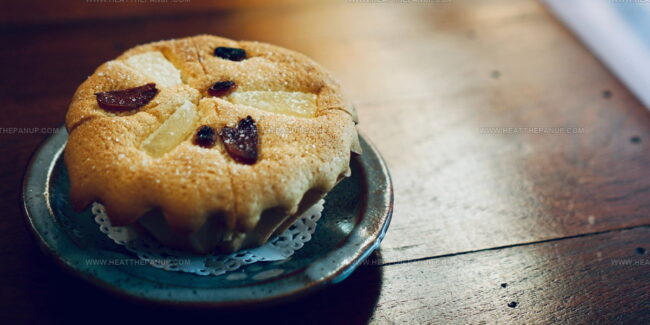
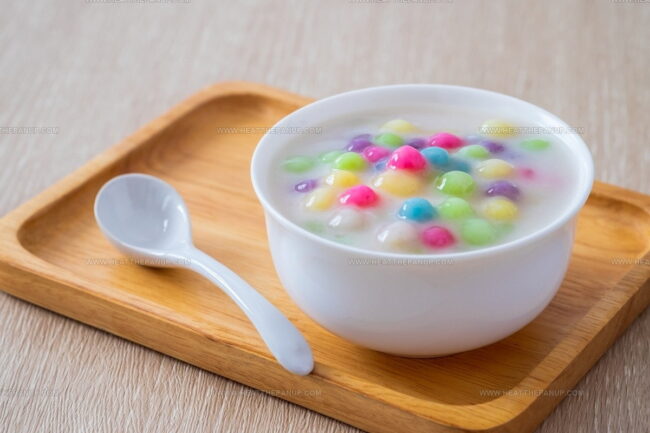
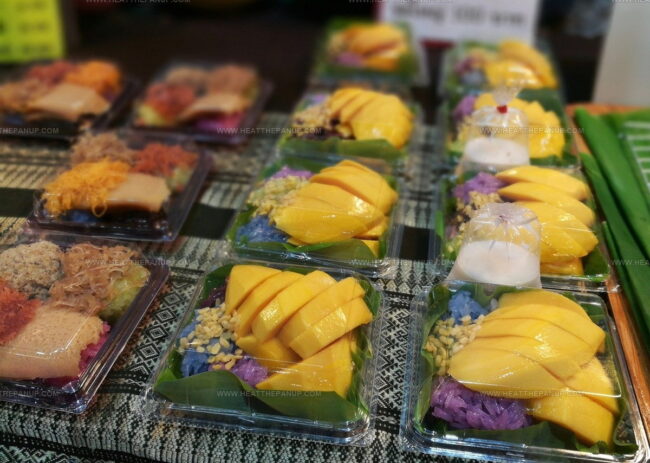
Angelina Wiles
Content Editor & Culinary Enthusiast
Expertise
Food Writing and Editing, Vegetarian and Vegan Cuisine, Baking and Pastry Arts, Sustainable Cooking Practices
Education
Portland Community College
Certificate in Culinary Arts
Focus: Emphasis on sustainable cooking practices, vegetarian cuisine, and food writing.
Oregon Culinary Institute
Diploma in Baking and Pastry Arts
Focus: Specialized training in artisanal baking, pastry techniques, and dessert presentation.
Angelina’s love for cooking started with handwritten family recipes and weekend trips to farmers’ markets around Portland. She followed her passion with a Certificate in Culinary Arts from Portland Community College, then perfected her sweet side with a Diploma in Baking and Pastry Arts at Oregon Culinary Institute.
Angelina believes recipes should feel like a conversation, not a science project. She’s all about helping readers trust themselves in the kitchen with simple steps, fresh ideas, and easy twists on classic meals.
When she’s not editing recipes, she’s baking bread, sipping coffee, or getting inspired by the changing seasons.